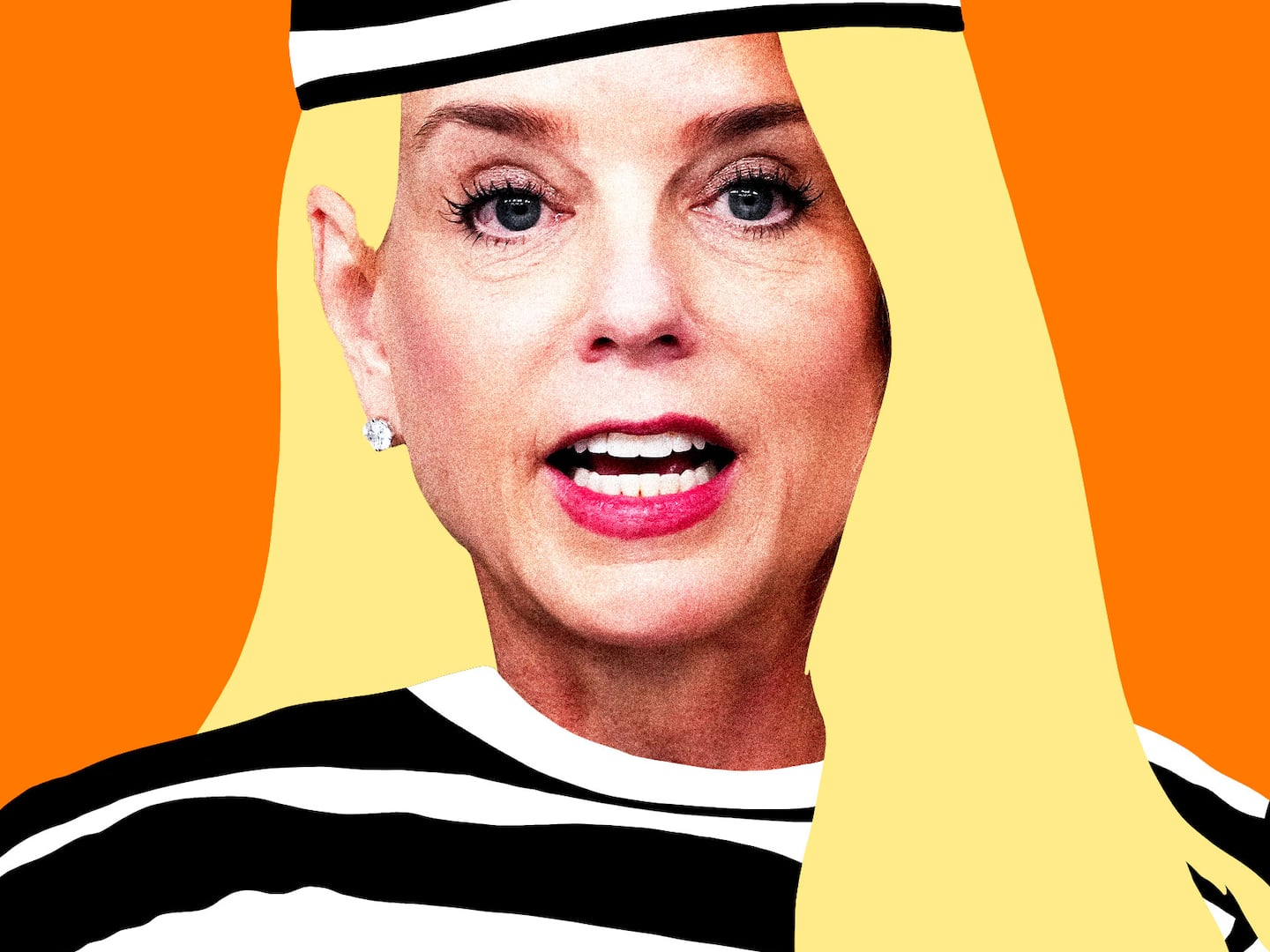The Wounded Warrior Project’s board of directors fired the charity’s chief executive officer and chief operating officer Thursday following years of scandal and suspect management.
Chief Executive Officer Steven Nardizzi and Chief Operating Officer Al Giordano were fired Thursday, CBS News first reported.
The board of directors has hired external legal counsel and forensic accountants to provide an independent review of allegations in the media, the organization said in a Thursday press release. “The review also found that some policies, procedures and controls at WWP have not kept pace with the organization’s rapid growth in recent years and are in need of strengthening,” the charity acknowledged.
The massive charity spent lavishly on snacks, company retreats, and more, whistleblowers told The Daily Beast. The charity had a quarter-million-dollar annual budget for candy and soda, and spent untold sums on staff field trips and elaborately produced music videos promoting executives.
The Wounded Warrior Project raised more than $340 million in 2014, making it one of the largest veterans’ charities in America. Its ubiquitous television commercials and product placement made it a household name, leading many Americans to donate to the group, thinking the vast majority of their contributions would go toward helping veterans.
Instead, less than 60 percent of the charity’s funds went directly to veterans’ programs (top-rated charities routinely spend more than 90 percent on programming). Meanwhile, Nardizzi collected an annual salary of more than $470,000.
Loads more was spent on staff. The charity spent some $250,000 a year on snacks and soda, according to an email from a senior executive. The email, provided by a source, was sent as part of a discussion about whether the charity’s employees were gaining weight thanks to all the junk food. Emails reveal that the organization spent more than $46,000 on snacks at its Jacksonville, Florida, headquarters in summer 2015.
The Wounded Warrior Project’s staff burned off some of those calories in mandatory, bi-weekly “fun” outings, which included scavenger hunts, walking tours, room-escape challenges, costume contests, bowling events, go-karting, and “laughter yoga”—all, according to two sources, at donors’ expense.
“I think it’s disgusting,” Erick Millette, a former Wounded Warrior Project employee, told The Daily Beast. “It’s not team-building. You don’t learn anything about your teammates, you don’t learn anything about how to better serve—you just have a good time at donors’ expense, you have a good meal, and then everyone drinks.”
Millette was in the U.S. Army for more than 11 years, including a 2006 tour in Iraq where he was wounded and subsequently received a Bronze Star and Purple Heart. The veteran worked for the charity as a Warrior Speaks spokesperson, sharing his story with audiences around the country. Millette said he quit out of disgust, accepting a pay cut because he “didn’t feel we were making an impact or providing the services we said we were providing.”
The Wounded Warrior Project has also been criticized for programs that don’t meet the needs of veterans, holding events that don’t address the core challenges that come with leaving military service. In a December 2015 conference call with staff, a transcript of which was provided to The Daily Beast, National Alumni Director Ryan Kules explained in detail the sorts of programs that were underway.
“In Minnesota this week family members will enjoy a haircut and relaxation-based spa service of their choice… in Anchorage, 25 alumni and their families will attend a local Fairbanks presentation of the holiday classic, A Christmas Carol. Thirty-five warriors and guests will spend the evening working on their bowling scores… in Colorado Springs. They’ll enjoy a meal during the game and have time afterwards for laser tag and arcade games…
“Twenty warriors and their families will take part in a special winter holiday Lego club night... The Honolulu team will host 12 alumni on a mindfulness hike. They will enjoy hiking and practicing yoga amongst the peaks and valleys, waterfalls, and bamboo forests...
“The San Diego alumni team will host 100 warriors and guests at Petco Park, which will be transformed into a winter wonderland... In Utah, warriors and their family members are invited to a healthy holiday cooking class, where they will learn recipes… that are fun and taste great... In New Mexico, warriors and guests will participate in an eight-week boot camp that will help them stay on track for the holidays… [those who attend frequently] will earn a discounted rate to continue at the facility.”
The Wounded Warrior Project did not respond to a detailed list of questions, emailed both to the organization and the public relations firm hired by the charity’s board in the wake of the recent controversies.
The internal culture of the organization is both spendthrifty and bizarre: “Fun” was a key principle that was emphasized to employees. People who worked for the organization were forced to attend team-building exercises twice a month or even more, sources said.
In addition, there was a “cult” feeling within the organization, Millette said.
“It’s a brainwashing, in essence… You need to be quiet, do what you’re told, drink the Kool-Aid and parade around with that logo on. It’s cult, it really is… it’s like how you would train a monkey, if you do something give them a piece of candy—in this case you give them a T-shirt or a polo… it’s extreme intimidation,” Millette said.
In an orientation for new employees, people were asked to watch a rap and rock music video produced by the charity. The video showed Nardizzi and top executives strolling through Times Square, according to two sources. Employees were told that Times Square was specifically cordoned off for the shoot.
In another production, reported by a Jacksonville TV station, Nardizzi was seen rappelling down the side of a five-star resort to make an entrance during a retreat for employees. The New York Times later reported that retreat cost nearly $1 million. In other instances, he rode a horse into a retreat at a Texas resort hotel; at a separate gathering, he rode a Segway through fake fog into an Orlando hotel.
Under Nardizzi’s leadership, a business book by Jim Collins, Good to Great, was distributed to every new hire and basically treated as the “Bible” for employees, a whistleblower said. The book holds up “great” businesses such as Circuit City, which filed for bankruptcy in 2008, and Fannie Mae, which was taken over by the federal government in 2008 during the subprime mortgage crisis that plunged the United States into a recession.
The charity’s unofficial motto for staff was “Don’t be a dumbass,” according to two sources. “Don’t be a dumbass” was repeated regularly on conference calls, in email signatures, and posted everywhere, they added.
Employees were forced also to undergo “five dysfunctions” training, based on another business book, in which team members would often be asked to talk about personal issues.
“They’re obsessed with it. They think staff need to go through it more than once… it involves sharing traumatic experiences you’ve had in your childhood or life—people would cry,” said a whistleblower.
The environment also meant choosing between the charity and family when it came time for a promotion. In one instance, senior staff was informed of a concern that advancement within the organization was difficult for staff not in the charity’s largest offices. This was especially a concern for employees whose family might have military obligations and couldn’t relocate for a better job.
“Really? We’ll miss you,” wrote an executive vice president in an internal email with senior staff, in apparent disregard of the concern.
The Daily Beast first reported on the Wounded Warrior Project’s problems in 2014 when concerns within the veterans community emerged that the charity had become more of a perpetual fundraising machine than a service organization. In May 2015, The Daily Beast reported on the charity’s efforts to sue or threaten small nonprofits that used “wounded warrior” in their names, spending resources on litigation rather than on vets. In June 2015, The Daily Beast reported on Nardizzi’s exorbitant salary and his efforts to allow philanthropies to have higher overhead costs and soaring executive salaries.
Some worry that the good work that the Wounded Warrior Project does will be lost in the midst of its ongoing crises.
“The danger here is that the impact and importance of the good work that WWP is accomplishing gets lost or damaged by all of this controversy,” a veterans advocate who works closely with the charity said. “Eighty-thousand wounded warriors and their families need the impactful programs being provided by WWP and it has to be preserved.”
The firing of the charity’s two top executives this week is not enough, say those with experience inside the organization. They say the problem lies in the organization’s very culture.
“While the firing of Nardizzi and Giordano is a solid first step to ending the rampant wasteful spending and poor organizational management at WWP, the board must continue their investigation to hold all of the executive officers accountable,” said a whistleblower who reached out to The Daily Beast. “The problems at WWP start at the top but this is a systemic problem that permeates through the culture of the organization. Ultimately, the selfish attitudes, egomaniacal actions, and self-interest led to donors being lied to and veterans being used for personal gain.”
“It’s a dysfunctional, broken organization that is in need of some severe repair and oversight—it extends all the way down to the director and lowest levels of management. [The attitude is] that we don’t answer to anyone, and we can do whatever we want once donors give us the money,” Millette added.






